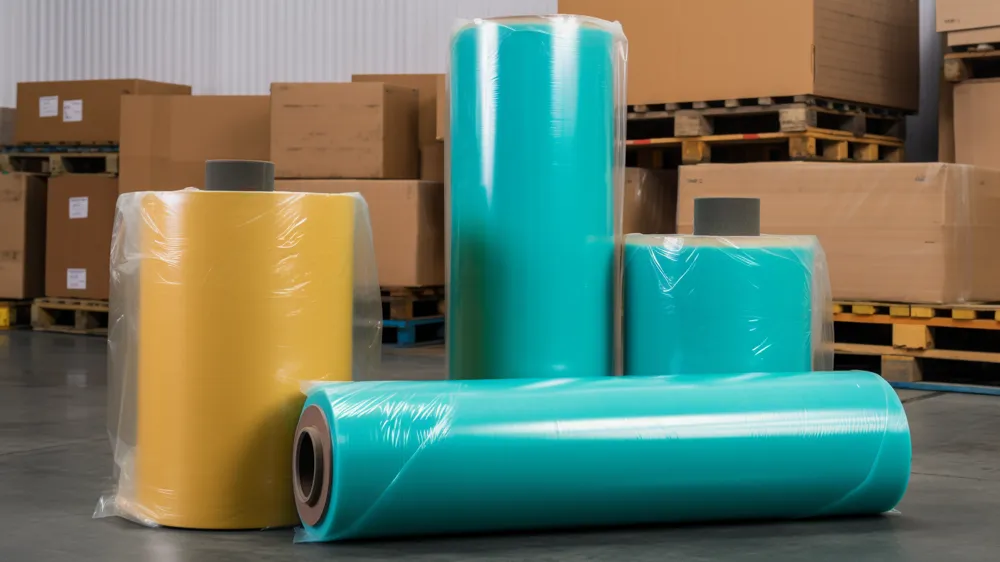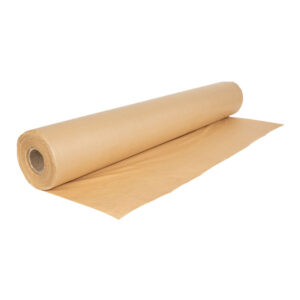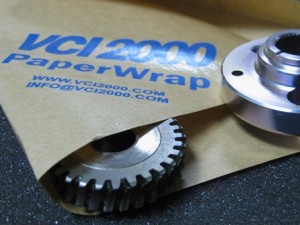Non-ferrous metals, particularly aluminum and copper, play a pivotal role in various industries due to their exceptional conductivity, lightweight nature, and corrosion resistance. However, despite these advantages, they are not immune to the challenges posed by environmental factors, such as corrosion and tarnish. Traditional methods of protection have often fallen short, necessitating the exploration of innovative solutions. One such solution gaining prominence in the realm of industrial packaging is the use of VCI stretch film. In this comprehensive blog post, we will delve into the unique challenges associated with safeguarding aluminum and copper, and how VCI stretch film is revolutionizing their protection.
Understanding the Peculiar Challenges in Non-Ferrous Metal Protection
Corrosion Woes in Aluminum and Copper
Aluminum and copper are highly valued for their corrosion resistance, making them indispensable in applications ranging from electrical wiring to aerospace components. However, they are not invulnerable to corrosion. The challenges lie in the fact that even a minor exposure to moisture, oxygen, or other environmental contaminants can lead to the formation of oxides or tarnish on the metal surface, compromising its quality and structural integrity.
Copper’s Vulnerability to Tarnish
Copper, in particular, is prone to tarnishing. When exposed to air, copper reacts with oxygen and moisture to form copper oxide, commonly known as tarnish. This tarnish not only mars the metal’s aesthetic appeal but can also impact its electrical conductivity. Industries relying on copper for electrical applications, such as wiring and connectors, face a constant battle against tarnish-induced performance degradation.
Aluminum’s Susceptibility to Corrosion
Aluminum, on the other hand, is susceptible to a specific form of corrosion known as white rust or aluminum oxide. This powdery substance forms on the surface of aluminum when it reacts with moisture. White rust not only affects the appearance of aluminum but can also compromise its structural integrity, making it imperative to implement effective protective measures.
Traditional Protective Measures: A Shortfall in Performance
Oil-based Coatings and Inhibitors
Historically, industries have relied on oil-based coatings and inhibitors to protect non-ferrous metals. While effective to some extent, these traditional methods come with their own set of drawbacks. Oil coatings can be messy, difficult to apply uniformly, and may not provide long-term protection. Moreover, they can pose challenges in terms of environmental impact and compliance with evolving regulations.
Desiccants and Moisture Absorbers
Another approach has been the use of desiccants and moisture absorbers to control the humidity levels around non-ferrous metals. However, maintaining optimal conditions consistently in dynamic industrial environments can be challenging. Additionally, these methods do not address the multifaceted challenges of protection, such as tarnish in copper and white rust in aluminum.
Enter VCI Stretch Film: A Game-Changing Innovation
Understanding Vapor Corrosion Inhibitors (VCIs)
VCI technology represents a paradigm shift in the protection of metals against corrosion. VCIs are compounds that release corrosion-inhibiting vapors into the atmosphere, creating a protective molecular layer on the metal surface. This layer acts as a barrier, preventing the interaction of the metal with corrosive elements such as moisture and oxygen.
How VCI Stretch Film Works
VCI stretch film takes this technology a step further by combining the advantages of traditional stretch film with the corrosion-inhibiting properties of VCIs. The film is designed to be wrapped securely around metal components, creating a sealed environment. As the VCI molecules are released, they disperse within this enclosed space, forming a protective shield around the metal.
Advantages of VCI Stretch Film
- Corrosion Prevention: The primary benefit of VCI stretch film is its ability to prevent corrosion by inhibiting the electrochemical reactions that lead to tarnish and oxide formation.
- Ease of Application: Unlike traditional coatings, VCI stretch film is easy to apply and ensures uniform coverage, even on complex or irregularly shaped metal surfaces.
- Environmentally Friendly: VCI stretch film is a cleaner and more environmentally friendly alternative to oil-based coatings, as it eliminates the need for messy application and minimizes waste.
- Cost-Effective: In the long run, VCI stretch film can prove to be cost-effective, considering the potential savings in maintenance and the extended lifespan of protected metal components.
Innovations Tailored to Aluminum Protection
Addressing White Rust Challenges
White rust is a specific concern in aluminum protection, and VCI stretch film has shown remarkable efficacy in mitigating this issue. The molecular layer formed by the VCI inhibits the formation of aluminum oxide by preventing the interaction of aluminum with moisture. This breakthrough innovation is particularly valuable in industries where aluminum components are exposed to varying environmental conditions.
Extended Shelf Life for Aluminum Components
VCI stretch film not only protects aluminum during transportation but also extends its shelf life in storage. This is crucial for industries dealing with aluminum products, as it ensures that the metal maintains its quality and performance characteristics over an extended period.
Revolutionizing Copper Protection with VCI Stretch Film
Combatting Tarnish in Copper
For industries relying on copper for critical applications, such as electrical conductivity, the prevention of tarnish is paramount. VCI stretch film addresses this challenge by forming a protective layer that inhibits the oxidation process, preserving the aesthetic and functional qualities of copper.
Applications in Electronics and Electrical Industries
The electronics and electrical industries, in particular, stand to benefit significantly from the use of VCI stretch film in copper protection. Whether it is copper wiring, connectors, or other essential components, the film provides a reliable and efficient solution for safeguarding these crucial elements against tarnish and corrosion.
Challenges and Considerations in VCI Stretch Film Implementation
Compatibility with Other Packaging Materials
While VCI stretch film offers a comprehensive solution, it is essential to consider its compatibility with other packaging materials used in the supply chain. Compatibility testing ensures that the film does not interact negatively with other substances, preserving its effectiveness in preventing corrosion.
Environmental Factors and Disposal
As with any packaging solution, environmental considerations are paramount. VCI stretch film, while environmentally friendly compared to traditional methods, requires proper disposal procedures to minimize its ecological impact. Understanding the film’s recyclability and disposal requirements is crucial for responsible use.
Looking Ahead: Future Trends and Developments
Continuous Advancements in VCI Technology
The success of VCI stretch film in protecting non-ferrous metals has spurred ongoing research and development in VCI technology. Researchers are exploring ways to enhance the longevity and effectiveness of VCI molecules, ensuring sustained protection over more extended periods and under diverse environmental conditions.
Integration with Smart Packaging Technologies
The integration of VCI stretch film with smart packaging technologies is an exciting avenue for future exploration. Imagine a packaging solution that not only protects against corrosion but also provides real-time data on the environmental conditions experienced by the metal components during transportation and storage. This integration could revolutionize supply chain management and preventive maintenance practices.
Conclusion
In the ever-evolving landscape of industrial packaging, the protection of non-ferrous metals presents a perpetual challenge. The advent of VCI stretch film, with its innovative combination of traditional stretch film properties and vapor corrosion inhibitors, is proving to be a game-changer. As industries continue to seek sustainable and effective solutions for aluminum and copper protection, VCI stretch film stands out as a reliable and efficient choice. Its ability to address the unique challenges posed by these metals, from white rust in aluminum to tarnish in copper, positions it as a key player in ensuring the longevity and performance of crucial components in various sectors. As research and development in VCI technology persist, we can anticipate even more advanced and tailored solutions, paving the way for a future where the protection of non-ferrous metals becomes more efficient, sustainable, and technologically integrated.






